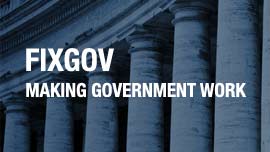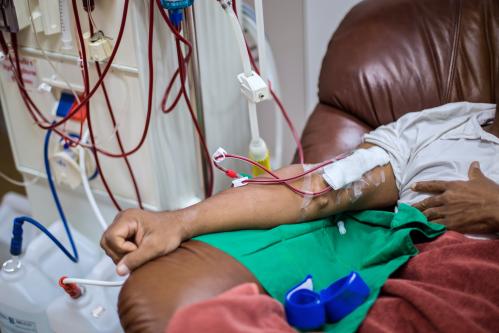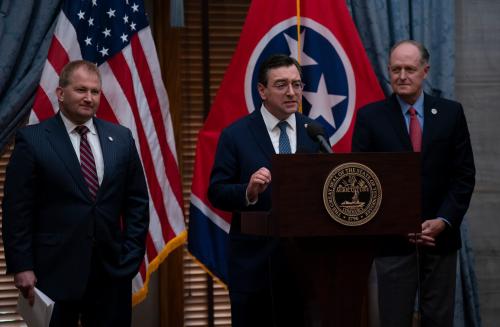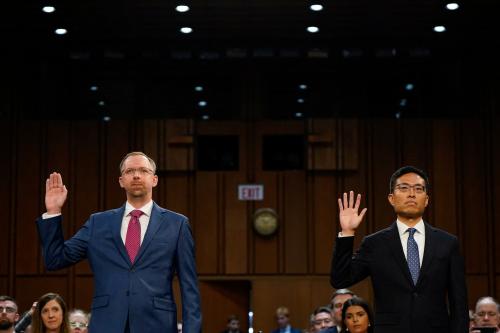The last half century has witnessed the dramatic rise of the “unilateral” presidency. With congressional action often stymied, presidents of both parties have aggressively sought to realize their policy preferences through executive actions. President Trump’s first months in office represent an extreme version of this governance trend—a unilateral presidency on steroids. Some conservatives have supported this approach, but a potential paradox has emerged: Conservative legal victories may now limit the scope of Trump’s unilateral executive power.
Conservatives advanced one of their major goals in the 2023-24 Supreme Court session—undercutting the “deep state” by overturning the Chevron doctrine. This doctrine afforded federal agencies substantial deference when courts reviewed their executive actions. Many conservatives viewed Chevron as giving unelected bureaucrats excessive power. However, their “deep state” aversion ignored the fact that many executive initiatives reflect the priorities of a presidential administration rather than federal civil servants. Hence, the question naturally arises—will Chevron’s demise now enhance the ability of Trump’s opponents to block his executive directives in the courts?
This article explores factors that will probably lead the Supreme Court’s reversal of Chevron to have a modest negative effect on the ability of Trump’s unilateral presidency to achieve its goals. Historically, the doctrine has galvanized some deference to the executive, primarily at the district and appellate court levels. The Supreme Court had abandoned obeisance to the doctrine more informally prior to Trump’s first term. Chevron’s reversal opens the door to the greater influence of the courts in shaping public policy. It elevates the potential importance of a judge’s partisan policy preferences in rendering decisions. As a result, forum shopping by opponents of the administration could become more strategic, and the administration’s success rate in lower courts may decline. But the impact of any such development on the Trump unilateral presidency will decline sharply if the Supreme Court curtails the use of nationwide injunctions by the lower courts.
Context: The court cases
The Chevron decision of 1984 was a byproduct of the Reagan unilateral presidency, which had proposed an administrative rule to soften EPA air pollution requirements (Chevron U.S.A. v. National Resources Defense Council). Environmental advocates opposed the rule and persuaded a court of appeals to invalidate it. The Reagan administration appealed this decision to the Supreme Court and prevailed. In siding with Reagan, the court established a two-step process for assessing executive branch actions. Step one entailed a judicial assessment of whether the law was “silent or ambiguous” on the issue brought before the court. In the absence of such clarity, the court urged substantial deference to federal agency interpretations of the law. In doing so, the court reasoned that the agency would have more expertise than judges. But it also paid homage to the concept of a unilateral presidency. It noted: “While agencies are not directly accountable to the people, the Chief Executive is, and it is entirely appropriate for the political branch of the Government to make such policy choices.” The court reasoned that a vague law might well have different permissible interpretations that a presidential administration might rightly shape.
In overturning Chevron in 2024, the Roberts court rejected both its expertise and presidential accountability claims (Loper Bright Enterprises v. Raimondo). It contended that administrative agencies had no special competence in resolving statutory ambiguities even on technical matters. The court affirmed that it would still pay “due respect” to proposed agency justifications of executive action and that at times these justifications might be “especially informative.” But it also stressed that the court could extract pertinent insights from other sources, such as amici briefs. Agency interpretations did not deserve special deference.
The Roberts court was even more emphatic in rejecting Chevron’s argument concerning respect for the unilateral presidency as a democratically accountable vehicle for making policy choices. The court denied that their review of agency actions had anything to do with policymaking. Instead, it involved “legal interpretations” that elected officials were not equipped to perform. It denied that different presidential administrations might have varying “permissible interpretations” of the statute. Instead, the courts could be counted on to unearth the “single, best meaning” of the law. The judiciary would do so “based on the traditional tools of statutory construction, not individual policy preferences.” (This conclusion, of course, flies in the face of a vast body of research that demonstrates that judges possess ample discretion to shape policy. I return to this issue below.)
Greater impact of Chevron’s demise in the lower courts
Chevron has had minimal impact on Supreme Court decisions in recent years. In the Loper Bright majority opinion, Justice Roberts noted that the Supreme Court had “not deferred to an agency interpretation under Chevron since 2016,” before Trump initially took office. This comports with the view of legal scholars that Chevron in the Supreme Court had achieved “zombie status” prior to Trump. Instead, the primary deference to Chevron occurred at the district and appellate court levels. In this regard, one overview of Chevron found that the case had been cited in some 15,000 judicial decisions and more than 40,000 court filings over its first three decades. Any impact of Loper Bright on the Trump unilateral presidency would therefore more likely occur in the lower courts.
While some research casts doubt on the magnitude of Chevron’s impact on judicial deference to agency actions, other studies suggest otherwise. They point to higher win rates for agencies in the appellate courts when they applied Chevron. For instance, an analysis of circuit court rulings from 2003 to 2013 found that the executive branch prevailed 77% of the time when these courts cited Chevron compared to 56% when they did not. To be sure, different appellate courts varied in the degree to which Chevron was associated with deference to agency actions. But in only one appellate court out of 13 was the Chevron win rate for agencies less than the overall rate of agency success in that court. On balance, studies suggest Chevron’s demise will make it somewhat more difficult for the Trump administration to prevail in the lower courts.
Heightened importance of judicial policy preferences and forum shopping
In the absence of Chevron’s “disciplining effect” on the decisions of lower court judges, the policy preferences of these judges will likely become more important. A vast scholarly literature indicates that these policy preferences substantially derive from their partisan ideologies. Judges nominated by Republican presidents typically differ in their preferences from those nominated by their Democratic counterparts. Knowledge of this tendency has, in the current polarized era, heightened presidential efforts to fill lower court vacancies promptly. Their incentive to do so increases from the fact that lower court rulings often take the form of nationwide injunctions, rather than targeting a more limited geographic area (e.g., a state). In essence, one district court judge can substantially delay implementation of a presidential directive across the entire United States.
As Trump entered his second term, Republican presidents had nominated about 40% of 641 federal district court judges and just over 50% of their 177 appellate court counterparts. Thanks to three appointments Trump made during his first term, Republican-appointed justices comprised two-thirds of the Supreme Court. But it would miss the point to assign too much importance to this partisan configuration in shaping prospects for the Trump administration’s court success in a post-Chevron world. This is because opponents of his executive initiatives enjoy the benefits of forum shopping. To a substantial degree, they can target the courts where ideologically compatible judges are more likely to hear their suits. For instance, 22 Democratic state attorneys general filed a challenge to Trump’s freeze of congressionally approved grant and loan funding in the Rhode Island federal district court. Judge John McConnell, a President Obama nominee, issued a preliminary nationwide injunction that blocked the freeze. Similar patterns of forum shopping for democratically appointed judges appear in many of the other suits brought by opponents of Trump’s executive initiatives.
Of course, the Trump administration can appeal adverse lower court rulings to the Supreme Court, where it stands to benefit from the dominance of Republican-appointed justices. One barrier to relying on the Supreme Court to ratify its executive initiatives is the limited number of cases (roughly 80) the court agrees to hear annually. But the high court’s embrace of the “shadow docket” mitigates this limitation. The shadow docket refers to Supreme Court interventions that do not derive from the formal hearing and judgment of cases (the “merit docket”). In this regard, presidential petitions to the Supreme Court for “emergency relief” loom large. These petitions seek to short-circuit adverse lower court rulings by persuading the Supreme Court to permit executive initiatives to take effect promptly while normal processes of judicial review proceed. When the full court votes on whether to provide emergency relief, it does not typically provide a detailed rationale for its decision, as it does with cases on the merit docket.
Used sparingly by prior presidents, the Trump administration has, in contrast, aggressively employed this tool. During Trump’s first term, the Justice Department sought emergency relief from the Supreme Court over 40 times, a rate 20 times greater than the unilateral presidencies of George W. Bush and Barack Obama. The second Trump administration has continued this practice. In its first months, the Trump administration sought emergency relief from the Supreme Court to override adverse lower court rulings several times. For instance, it applied for such relief from lower court decisions blocking its efforts to cut $2 billion in funding for foreign aid. It also filed emergency petitions that would allow it to circumvent lower court rulings that blocked implementation of a Trump executive order curtailing the rights of those born in the United States to citizenship.
Despite Trump’s partisan advantage on the Supreme Court, the degree to which it will ratify his executive initiatives remains an open question. The skepticism about deference to administrative agencies that animated the Supreme Court’s Chevron decision may occasionally spill over to thwart the Trump unilateral presidency. In this vein, one study found that the Supreme Court presided over by Chief Justice Roberts was more aggressive than its predecessors (dating back to 1937) in ruling against presidents in orally argued cases (the merit docket). The Roberts court ruled against the president about half the time in general, and in” high stakes” cases about 65% of the time. To be sure, the Roberts court was more likely to rule against the initiatives of Democratic as opposed to Republican presidents. But the first Trump administration also frequently suffered Supreme Court defeats. The study did not, however, examine the degree to which the Supreme Court sided with presidents in their shadow docket requests for emergency relief. Early developments from Trump’s second term provide mixed evidence concerning the Supreme Court’s tendencies in this regard. In March, for instance, the Supreme Court, by a 5-4 margin, declined to halt lower court rulings blocking the defunding of foreign aid by the Trump administration. In April, however, the Supreme Court by 5-4 allowed Trump to suspend $65 million in teacher training grants, overruling district and appellate court decisions blocking the suspension.
Make Chevron less relevant by reducing the costs of court defeats
Going forward, the Trump administration could make Chevron’s demise less relevant to its fortunes by paring the costs of losing in court. At least two possibilities emerge in this regard. One focuses on curbing the ability of lower courts to impose nationwide injunctions. Republicans in both the Senate and House of Representatives have introduced legislation that would accomplish that goal. But these bills seem unlikely to become law. Instead, the Trump administration’s appeal of lower court rulings on birthright citizenship provides a more immediate test case in efforts to limit nationwide injunctions. Shortly after President Trump took office, he issued an executive order ending birthright citizenship for babies who do not have at least one parent who is either a U.S. citizen or a legal permanent resident. This action triggered suits that led federal district judges in Maryland, Massachusetts, and Washington to block implementation of the executive order until the courts could resolve the case (likely in the Supreme Court upon appeal of lower court rulings). In response, the Trump administration filed three requests for emergency relief to the Supreme Court in March. Complaining that “universal injunctions have reached epidemic proportions,” the Justice Department proposed that the birthright injunction only apply in the 22 states represented by the Democratic state attorneys general (plus the District of Columbia) who had successfully challenged the executive order. This would allow the suspension of birthright citizenship in 28 states until the courts finally resolved the order’s legality. If the Trump administration succeeds in curtailing nationwide injunctions, it would make any loss of Chevron deference in the lower courts much less destructive of its executive agenda.
Second, the overturning of Chevron will become increasingly irrelevant if the Trump administration shirks in its implementation of court orders. Thus far, such shirking has taken the form of slow walking or other more subtle sabotage of court decrees. But such shirking could conceivably assume the guise of flagrant disobedience. Scholars and stakeholders should closely monitor the nature and magnitude of all forms of such sabotage. The findings of this monitoring will, among other factors, illuminate whether and the degree to which democracy and the rule of law can be sustained in the United States.
The Brookings Institution is committed to quality, independence, and impact.
We are supported by a diverse array of funders. In line with our values and policies, each Brookings publication represents the sole views of its author(s).







Commentary
Will the Supreme Court’s Chevron decision undercut Trump’s unilateral presidency?
May 23, 2025